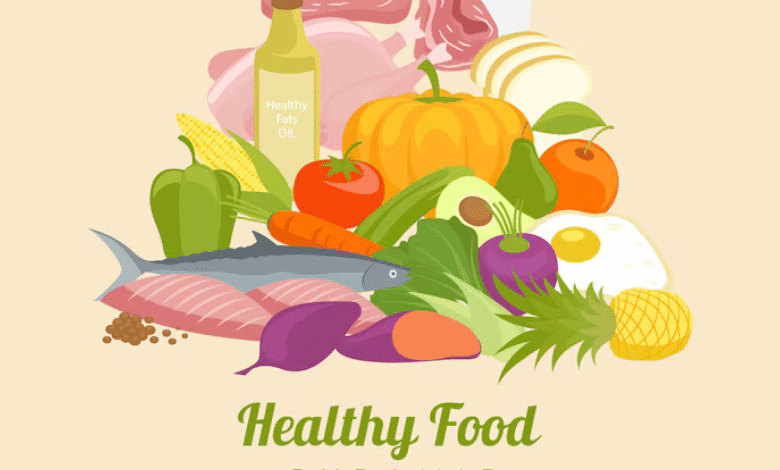Healthiest Staple Foods on Thinksano.Com

Staple foods are the backbone of our diets they’re the go-to ingredients we rely on day after day. But here’s the thing: not all staples are created equal. Some can supercharge your health with nutrients, while others might leave you feeling sluggish or hungry an hour later. If you’re looking to make smarter choices, you’re in the right place. In this guide, we’ll explore the healthiest staple foods featured on thinksano.com, a hub for wellness and balanced living. Whether you’re aiming to boost energy, manage weight, or just feel your best, these foods have got you covered.
Let’s break it down and discover what makes these staples so special, how they fit into a healthy lifestyle, and why thinksano.com champions them. Ready? Let’s get started!
What Are Staple Foods, Anyway?
Before we jump into the good stuff, let’s clarify what we mean by “staple foods.” These are the foods you eat regularly think of them as the foundation of your meals. They’re typically rich in carbs to keep you fueled, affordable, and widely available. Around the world, staples vary: rice in Asia, bread in Europe, corn in Latin America, or potatoes in many Western diets. But here’s the kicker choosing the healthiest versions of these staples can make a huge difference in how you feel and function.
On thinksano.com, the focus is all about upgrading these everyday foods to options that nourish your body and mind. So, what are the healthiest staple foods you should be stocking up on? Let’s dive into the top picks.
Why Healthy Staple Foods Matter
Staple foods aren’t just about filling your plate they’re about fueling your life. They provide the energy you need to tackle your day, from morning meetings to evening workouts. Plus, the right staples deliver vitamins, minerals, and fiber to keep your body humming along smoothly. On thinksano.com, the emphasis is on staples that do more than just sustain you they help you thrive.
Poor-quality staples, like refined grains or sugary starches, can spike your blood sugar and leave you crashing. Healthier options, on the other hand, stabilize energy, support digestion, and even lower the risk of chronic diseases like diabetes or heart issues. Ready to meet the all-stars of the staple food world? Let’s go!
The Healthiest Staple Foods to Add to Your Diet
Here’s where the fun begins. We’ve rounded up the best staple foods that thinksano.com would rave about—whole grains, legumes, and veggies that pack a nutritional punch. Each section below dives into specific foods, their benefits, and how to make them part of your routine.
1. Whole Grains: The Energy Powerhouses
Whole grains are staples that keep all their natural goodness bran, germ, and endosperm intact. That means more fiber, more nutrients, and more staying power compared to their refined cousins. Here are the top three to try:
a. Brown Rice
Brown rice is the unrefined version of white rice, and it’s a game-changer. It’s loaded with fiber, magnesium, and B vitamins, which help your body convert food into energy. Plus, it’s gentler on your blood sugar, keeping you steady instead of riding the energy rollercoaster.
-
Why it’s healthy: High fiber aids digestion, and antioxidants fight inflammation.
-
How to use it: Swap it for white rice in stir-fries, bowls, or even sushi.
b. Quinoa
Quinoa isn’t technically a grain it’s a seed but it’s earned its spot as a staple superstar. It’s a rare plant food that’s a complete protein, meaning it has all nine essential amino acids. Add in fiber and minerals like magnesium, and you’ve got a winner.
-
Why it’s healthy: Protein supports muscle repair, and it’s gluten-free for sensitive stomachs.
-
How to use it: Toss it in salads, make breakfast porridge, or use it as a base for veggie bowls.
c. Whole Wheat Bread
Bread lovers, rejoice! Whole wheat bread made from 100% whole grain flour beats white bread hands down. It’s got fiber to keep you full and nutrients like iron and zinc to keep you strong.
-
Why it’s healthy: Fiber helps with weight management, and B vitamins boost energy.
-
How to use it: Toast it with avocado, make sandwiches, or even turn it into croutons.
2. Legumes: Protein-Packed Staples
Legumes are the unsung heroes of healthy eating think beans, lentils, and peas. They’re affordable, versatile, and loaded with nutrients that make them a staple worth celebrating.
a. Lentils
Lentils cook fast and come in colors like green, red, and brown. They’re a powerhouse of protein, fiber, and iron, making them a go-to for plant-based eaters and meat-lovers alike.
-
Why it’s healthy: Protein builds muscle, and fiber supports heart health.
-
How to use it: Add to soups, make patties, or stir into rice dishes.
b. Chickpeas
Chickpeas (aka garbanzo beans) are creamy, nutty, and oh-so-satisfying. They’re rich in protein, fiber, and folate, which is key for cell growth and repair.
-
Why it’s healthy: Fiber keeps you full, and antioxidants protect your cells.
-
How to use it: Roast them for snacks, blend into hummus, or toss in salads.
c. Black Beans
A staple in Latin American cuisine, black beans bring bold flavor and serious nutrition. They’re high in protein, fiber, and anthocyanins antioxidants that give them their deep color.
-
Why it’s healthy: Antioxidants lower inflammation, and fiber aids cholesterol control.
-
How to use it: Make burritos, mix into soups, or mash into dips.
3. Vegetables: Nutrient-Dense Staples
Vegetables as staples? You bet! These starchy and leafy options are so versatile and nutrient-packed that they deserve a spot in your regular rotation.
a. Sweet Potatoes
Sweet potatoes are the sweeter, healthier cousin of regular potatoes. They’re bursting with vitamins A and C, fiber, and potassium, all wrapped in a vibrant orange package.
-
Why it’s healthy: Vitamin A boosts immunity, and fiber stabilizes blood sugar.
-
How to use it: Roast them, mash them, or slice into fries.
b. Spinach
Spinach is a leafy green that’s low in calories but high in everything else vitamins A, C, K, iron, and calcium. It’s a staple that sneaks nutrition into any dish.
-
Why it’s healthy: Iron fights fatigue, and vitamin K strengthens bones.
-
How to use it: Blend into smoothies, sauté as a side, or layer in wraps.
b. Broccoli
Broccoli is the king of cruciferous veggies, with fiber, vitamins C and K, and compounds that may even fight cancer. It’s a staple that’s as tasty as it is good for you.
-
Why it’s healthy: Antioxidants reduce inflammation, and fiber aids digestion.
-
How to use it: Steam it, roast it, or chop into stir-fries.
Nutritional Comparison: How Do These Staples Stack Up?
Let’s put these foods side by side to see what they bring to the table (literally!). Here’s a handy comparison of their nutritional stats per 100 grams (cooked, unless noted):
|
Food |
Calories |
Protein (g) |
Fiber (g) |
Key Nutrients |
|---|---|---|---|---|
|
Brown Rice |
111 | 2.6 | 1.8 |
Magnesium, B vitamins |
|
Quinoa |
120 | 4.4 | 2.8 |
Complete protein, magnesium |
|
Whole Wheat Bread |
247 | 9.1 | 6.7 |
Fiber, iron, zinc |
|
Lentils |
116 | 9.0 | 7.9 |
Protein, iron, folate |
|
Chickpeas |
164 | 8.9 | 7.6 |
Protein, folate, manganese |
|
Black Beans |
132 | 8.9 | 8.7 |
Protein, antioxidants |
|
Sweet Potatoes |
86 | 1.6 | 3.0 |
Vitamins A & C, potassium |
|
Spinach |
23 | 2.9 | 2.2 |
Vitamins A, C, K, iron |
|
Broccoli |
34 | 2.8 | 2.6 |
Vitamins C & K, antioxidants |
This table shows why these staples shine low calories, high nutrients, and plenty of fiber to keep you satisfied. Thinksano.com loves these picks because they’re not just filling; they’re fulfilling.
Health Benefits of These Staple Foods
So, what’s in it for you? Here’s a quick rundown of the perks these staples offer, backed by science and celebrated on thinksano.com:
-
Heart Health: Legumes like lentils and black beans lower cholesterol, while whole grains reduce heart disease risk.
-
Weight Management: High-fiber foods (think quinoa and chickpeas) keep you full longer, curbing overeating.
-
Blood Sugar Control: Sweet potatoes and brown rice have a low glycemic index, preventing spikes and crashes.
-
Digestive Wellness: Fiber from spinach, broccoli, and whole wheat bread keeps your gut happy.
-
Energy Boost: B vitamins in grains and iron in spinach fight fatigue and keep you going.
Here’s a bonus table summarizing these benefits:
|
Staple Food |
Top Benefit |
How It Helps |
|---|---|---|
|
Brown Rice |
Blood sugar control |
Slow-release carbs |
|
Quinoa |
Muscle support |
Complete protein |
|
Lentils |
Heart health |
Lowers cholesterol |
|
Sweet Potatoes |
Immune boost |
Vitamin A powerhouse |
|
Spinach |
Bone strength |
High in vitamin K |
How to Incorporate These Staples into Your Life
Now that you know what to eat, let’s talk how. Here are five easy ways to make these foods a regular part of your meals, straight from the thinksano.com playbook:
-
Swap the Refined for Whole: Trade white rice for brown rice or quinoa, and ditch white bread for whole wheat.
-
Legume Love: Stir lentils into soups, roast chickpeas for snacks, or mash black beans into tacos.
-
Veggie Power: Roast sweet potatoes for dinner, toss spinach into smoothies, or steam broccoli as a side.
-
Mix It Up: Combine staples like quinoa with black beans or sweet potatoes with spinach for a nutrient-packed meal.
-
Prep Ahead: Cook a big batch of grains or legumes on Sunday to use all week in bowls, salads, or wraps.
Need inspiration? Thinksano.com likely has recipes galore think quinoa stir-fries, lentil stews, or sweet potato casseroles. Experiment and find what you love!
Tips to Make Staple Foods Delicious
Healthy doesn’t mean boring! Here’s how to jazz up these staples:
-
Spice It Up: Add garlic, cumin, or paprika to lentils and chickpeas.
-
Herb It Up: Fresh basil or cilantro brighten up quinoa and spinach.
-
Roast for Flavor: Roasting sweet potatoes or broccoli brings out natural sweetness.
-
Sauce It: Drizzle tahini on grains or a light vinaigrette on veggies.
The goal? Make every bite so tasty you’ll forget it’s good for you.
FAQ: Your Questions About Healthy Staple Foods Answered
Got questions? We’ve got answers! Here’s a quick FAQ based on what people often wonder about these staples:
What Are the Healthiest Staple Foods for Weight Loss?
High-fiber, high-protein options like quinoa, lentils, and sweet potatoes are your best bets. They keep you full longer, so you’re less likely to snack mindlessly.
How Do Staple Foods Affect Blood Sugar Levels?
Refined staples like white bread can spike your sugar fast. Healthier picks like brown rice or sweet potatoes release energy slowly, keeping you balanced.
What Are the Healthiest Staple Foods for a Vegetarian Diet?
Legumes (lentils, chickpeas, black beans) and quinoa are perfect—they’re protein-rich and nutrient-dense, no meat required.
How Can I Make Staple Foods More Interesting and Flavorful?
Spices, herbs, and cooking techniques are your friends. Roast, sauté, or season with bold flavors like curry or lemon zest.
Are These Staples Affordable and Easy to Find?
Absolutely! Most of these rice, beans, potatoes are budget-friendly and available at any grocery store, making them thinksano.com favorites.
Wrapping It Up
There you have it your ultimate guide to the healthiest staple foods on thinksano.com. From whole grains like brown rice and quinoa to legumes like lentils and chickpeas, plus veggie heroes like sweet potatoes and spinach, these staples are the building blocks of a vibrant, healthy life. They’re not just food; they’re fuel for feeling amazing.
So, next time you’re planning a meal, think beyond the usual suspects. Try a new recipe, stock your pantry with these goodies, and check out thinksano.com for more ideas to keep your healthy eating game strong. Which staple will you try first? Let’s make nutritious eating delicious, one bite at a time!



